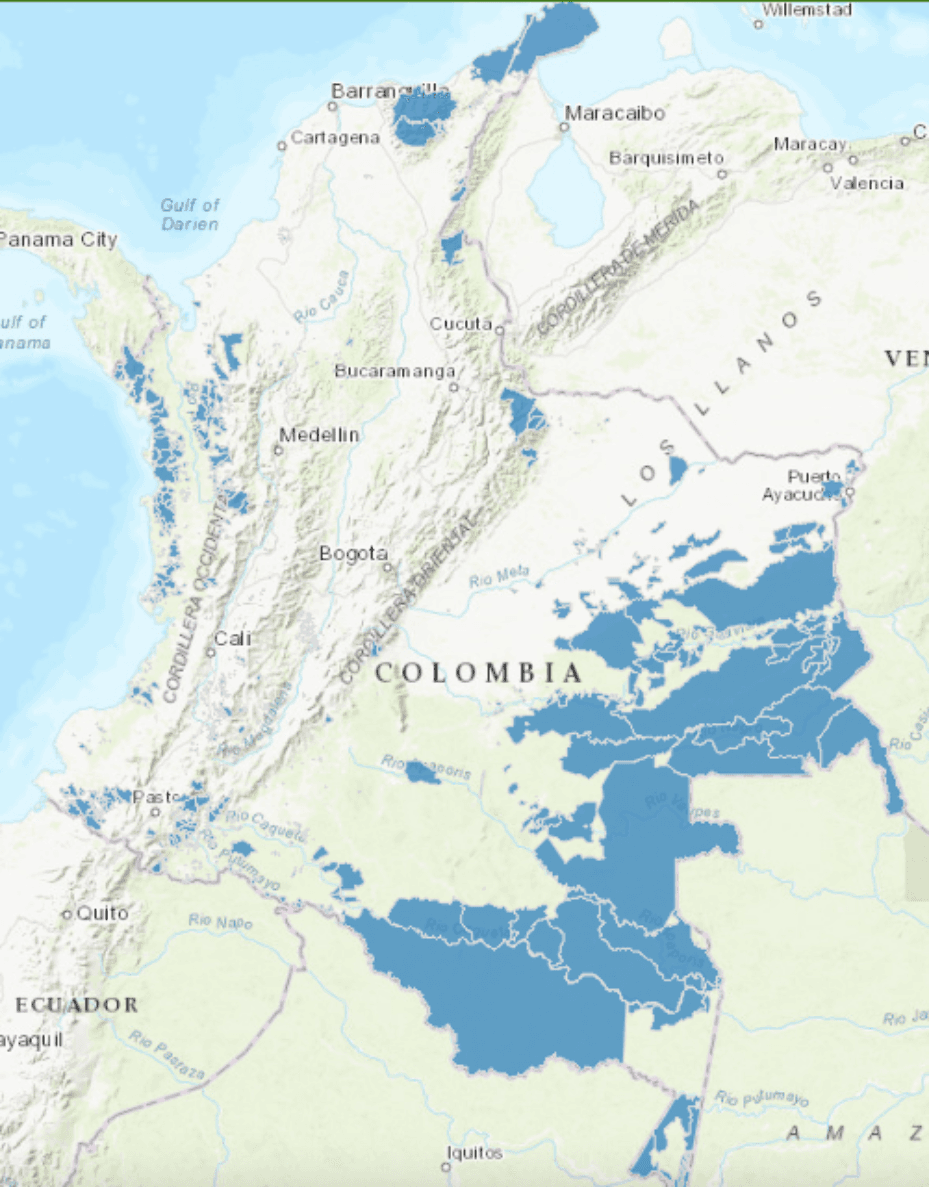Colombia
Extractivism and the Governance of Indigenous Peoples in Colombia: Between Injury and Resistance

Since the violent imposition of Spanish colonial rule in the 1500s, indigenous peoples in Colombia have been subjected to multiple injuries produced by the extraction of natural resources and external forms of governance. This exhibition, authored and curated by Dr Jennifer Bates, uses visual and textual material including maps, photographs and documents to trace extractivism and the governance of indigenous peoples from the colonial era, to Colombia’s independence after 1819, through to the present day. It examines the continuities in dispossession and subordination of indigenous communities produced by the extraction of gold during colonial rule, and coal extraction since the 1970s. In parallel, the material explores changing forms of governance as they relate to and constitute indigenous rights, and the emergence of indigenous resistance centred on the reclamation of land. While revealing the significant strides made through indigenous political struggles for land, the exhibition also highlights the fundamental, historically rooted tension between indigenous land rights and the logics of extraction that lead to dispossession and damage to their lands.
Indigenous Land Activism

Indigenous struggles for land rights in Colombia emerged in the 20th century. A historic leader of these struggles was Manuel Quintín Lame (1880-1967), pictured front centre after he was detained by authorities in 1916. Lame’s activism combined seeking to establish an independent indigenous republic in southern Colombia, with the interpretation of statutory law to reclaim communal land. The quote from Lame below shows the importance of the resguardo (reserve) in these land claims.
What better medicine to cure the ancient wound of our race, dead in four fifths of its original glory in this land we call Colombia, stolen its lands and mines almost in their entirety? The small resguardos given to us by the colonial regime have been a real guarantee of property.
In Defence of the Resguardo
Indigenous struggles for land gained further momentum through political organisations formed in the 1960s and 1970s. In 1967, the government created the National Peasant Association of Colombia (ANUC) to involve farmers in agrarian reform. ANUC had an Indigenous Secretariat whose members went on to form the Regional Indigenous Council of Cauca (CRIC), Colombia’s first indigenous political organisation, in 1971. The recovery and expansion of resguardos were two of CRIC’s founding aims.
(Re)constituting Indigenous Rights in the 1990s
At the end of the 1980s, the Colombian state was widely perceived to be facing a crisis of legitimacy amid high levels of violence from drug trafficking and the armed conflict, beginning in 1964, between guerrilla groups, paramilitary groups and the state. Following popular demands to replace the 1886 constitution, elections for the National Constituent Assembly took place in December 1990. Of the 70 delegates elected, pictured on the cover of the Gaceta Constitucional (Constitutional Gazette) below, two were indigenous political leaders who played a pivotal role in advocating for indigenous rights. The resulting 1991 constitution is considered a regional leader for both the number and range of indigenous rights included.

Geographies of Indigenous Land and Geographies of Extraction

Indigenous land struggles have resulted in their ownership of some 30 percent of Colombia’s territory. The blue areas in this map, produced by the National Land Agency, show indigenous resguardos as of July 2024. As Vélez-Torres (2014) highlights, property rights granted to companies to extract resources and the land titles granted to indigenous communities constitute competing architectures of rights, with successive Colombian political elites prioritising the former over the latter. According to the human rights organisation Forest Peoples Programme, approximately 343,3030 hectares of mining concessions [an area the size of Buenos Aires] overlap with resguardo lands.